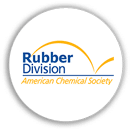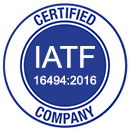The American Society for Testing and Materials (ASTM) is an international organization that develops and publishes voluntary consensus standards for a wide range of materials, products, systems, and services. Founded in 1898, ASTM is a leading global player in setting the benchmark for industry standards. With a network of over 30,000 members from more than 140 countries, they are vital for ensuring quality, safety, and performance across various sectors, including the rubber industry.
What is ASTM?
ASTM International provides a platform for experts to collaborate and develop standards that ensure products and materials meet performance, safety, and quality requirements. ASTM standards are recognized globally and help companies to:
- Enhance product reliability and performance
- Streamline manufacturing and production processes
- Ensure regulatory compliance
- Protect consumer safety
- Cover a broad range of industries including construction, electronics, automotive, and, of course, the rubber industry.
Why is ASTM Important to the Rubber Industry?
Rubber plays a crucial role in many industries, from automotive and aerospace to medical devices and consumer goods. The performance of rubber materials is highly dependent on their composition, processing, and testing standards. ASTM standards provide a framework for ensuring that rubber products meet the necessary specifications for performance, durability, and safety.
1. Ensuring Quality and Consistency
ASTM standards help manufacturers produce rubber materials and products that maintain consistent quality across different batches. By following established ASTM guidelines, companies can ensure their rubber materials meet specified requirements for strength, durability, and elasticity, resulting in reliable end products.
2. Performance Testing and Validation
ASTM standards include rigorous test methods to evaluate the physical, mechanical, and chemical properties of rubber. These tests ensure that rubber products perform as expected under various conditions, including temperature extremes, stress, exposure to chemicals, and wear. Examples of tests include ASTM D412 (tensile strength), ASTM D2000 (rubber materials for automotive applications), and ASTM D2240 (durometer hardness).
3. Compliance with Regulatory Requirements
In industries such as automotive, medical devices, and consumer goods, compliance with regulatory standards is critical. ASTM rubber standards are often used to meet governmental regulations, ensuring products are safe for use and environmentally sound. This is particularly important in applications where rubber interacts with human health, such as medical seals, gaskets, and surgical devices.
4. Innovation and Research
The rubber industry continually evolves with advances in materials science, processing techniques, and application requirements. ASTM standards provide a foundation for ongoing innovation by offering guidelines that keep pace with technological developments. Researchers and manufacturers rely on these standards to explore new materials, enhance existing products, and solve engineering challenges.
5. Global Trade and Acceptance
Widely recognized across the globe for businesses in the rubber industry that deal with international markets, compliance with ASTM standards is often necessary for exporting products and gaining access to global markets. Using ASTM standards assures customers and regulatory bodies that products meet universally accepted quality benchmarks.
Standards for Rubber
Some of the most significant ones that are crucial to the rubber industry include:
- ASTM D412: Standard Test Methods for Vulcanized Rubber and Thermoplastic Elastomers—Tension
- ASTM D2000: Standard Classification System for Rubber Products in Automotive Applications
- ASTM D2240: Standard Test Method for Rubber Property—Durometer Hardness
- ASTM D3182: Standard Practice for Rubber—Preparation of Samples and Determination of Physical Properties
- ASTM D945: Standard Test Method for Oxidation of Lubricants in Steel
These standards cover various aspects such as mechanical testing, chemical resistance, aging properties, and environmental impact. By adhering to these standards, manufacturers ensure their products are safe, durable, and high-performing.









